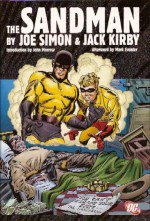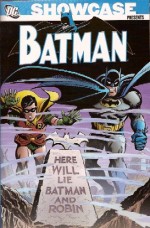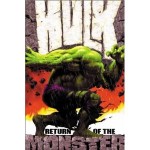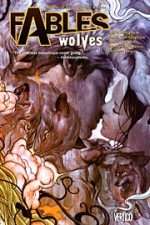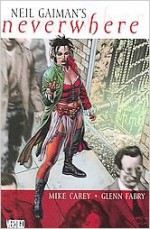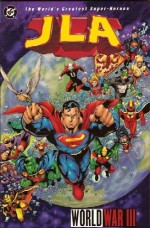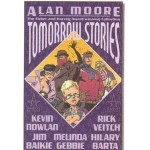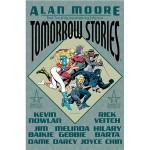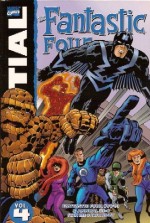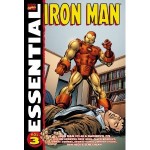
By Archie Goodwin, Gerry Conway, George Tuska, Don Heck & various (Marvel)
ISBN: 978-0-7851-2764-2
Having finally overtaken the aging colossus of National/DC, upstart Marvel Comics sometimes seemed to be at a loss for what to do next. The answer is obvious to us: more of the same… but back then the rules were being constantly rewritten, the country was changing and conflict was everywhere. Perhaps what was needed was more experimentation…
Created in the aftermath of the Cuban Missile Crisis and at a time when “Red-baiting†and “Commie-bashing†were American national obsessions, the emergence of a brilliant new Thomas Edison, using Yankee ingenuity, invention and wealth to safeguard and better the World, seemed inevitable. Combine the then-sacrosanct belief that technology and business could solve any problem with the universal imagery of noble knights battling evil and the concept behind the Invincible Iron Man seems an infallibly successful proposition.
Of course where once Tony Stark was the acceptable face of 1960s Capitalism; a glamorous millionaire industrialist/inventor and a benevolent all-conquering hero when clad in the super-scientific armour of his alter-ego Iron Man, the tumultuous tone of the times soon resigned his suave, fat-cat image to the dustbin of history and with ecological disasters and social catastrophe from the abuse of industry and technology the new mantras of the young, the Golden Avenger and Stark International were soon confronting some tricky questions from the increasingly socially conscious readership.
All of a sudden maybe that money and fancy gadgetry weren’t quite so fun or cool anymore…?
This third gleaming black and white chronological compendium covers that transitional period, reprinting Iron Man #12-38 and also includes a tumultuous team-up with the Man Without Fear from Daredevil #73, which held a key portion of an rather complex comics crossover.
Writer Archie Goodwin and artists George Tuska & Johnny Craig continued their sterling run of solid science-flavoured action epics with the introduction of a new sinister super-foe in #12 with ‘The Coming of the Controller’ a twisted genius who used the energy of enslaved citizens to power a cybernetic exo-skeleton and the embezzled funds of Stark’s girlfriend Janice Cord to pay for it all. Of course Iron Man was ready and able to overcome the scheming maniac, culminating in a cataclysmic climax in ‘Captives of the Controller!’
With #14’s ‘The Night Phantom Walks!’ Goodwin paid tribute to Craig’s past history drawing EC’s landmark horror comics as the artist pencilled and inked the tale of a zombie-like monster which prowled a Caribbean island destroying Stark Industry installations. As well as being a terse, moody thriller this story marked the first indications of a different attitude as the menace’s ecologically inspired reign of terror included some pretty fair arguments about the downsides of “Progress†and rapacious globalisation…
Tuska returned with #15 and ‘Said the Unicorn to the Ghost…!’ as the demented former spy allied himself with Fantastic Four foe Red Ghost in a bid to find a cure for his drastically shortened his life-span. Attempting to kidnap Tony Stark the Ghost betrayed the Unicorn and retrenched to an African Cosmic Ray research facility in the concluding ‘Of Beasts and Men!’, and it took a risky alliance of hero and villain to thwart the phantom mastermind’s ill-conceived plans…
An extended epic began in Iron Man #17 as an android designed to protect Stark’s secret identity gained sinister sentience and actually replaced him. ‘The Beginning of the End!’ also introduced the enigmatic Madame Masque and her malevolent master Midas, who planned to take control of America’s greatest technology company.
Dispossessed and on the run Stark is abducted and aligns with Masque and Midas to reclaim his identity only to suffer a fatal heart-attack in ‘Even Heroes Die!’ (guest-starring the Avengers) before a ground-breaking transplant – still practically science fiction in those distant days – gave him renewed hope in ‘What Price Life?’ The opportunist Midas instantly struck again whilst the enigmatic Madame Masque switched sides…
X-Men’s alien nemesis attacked the restored hero in ‘Who Serves Lucifer?’ (inked by Joe Gaudioso – AKA Mike Esposito) before being returned to his dungeon dimension whilst an African-American boxer, Eddie March, became the next Iron Man in #21’s ‘The Replacement!’ as Stark , free from the heart-stimulating chest-plate which had preserved his life for years was briefly tempted by a life without strife. Unfortunately, unknown to all Eddie had a little health problem of his own…
When armoured menace Titanium Man resurfaced, another old threat in the form of the Crimson Dynamo returned in #22’s classic ‘From this Conflict… Death!’ and a vengeance-crazed Iron Man went ballistic in the innovative action-thriller ‘The Man who Killed Tony Stark!!’ before finding solace in the arms of Madame Masque as Johnny Craig returned to fully illustrate the superb mythological monster-mash ‘My Son… The Minotaur!’ and stayed on as Archie Goodwin pinned Iron’s Man new Green colours to the comic’s mast in #25’s stunning eco-parable ‘This Doomed Land… This Dying Sea!’
Teamed with and battling against antihero Sub-Mariner the Armoured Avenger was forced to destroy one of his own hyper-polluting facilities, subsequently changing his company’s ethical position and business model – although his attempts to convince other industry leaders to do likewise met with the kind of reaction that tragically typified America’s response to the real-world situation.
Original Iron Man artist Don Heck returned for the fantasy-fuelled romp ‘Duel in a Dark Dimension!’ (inked by Craig) with guest villain The Collector and racial tensions took centre-stage in ‘The Fury of the Firebrand!’ which introduced an inflammatory radical with secret and highly personal agenda of hate aimed squarely at Stark and the fat-cat he represented. He was also a human napalm grenade…
Goodwin bowed out with #28’s riotous return match ‘The Controller Lives!’ so Mimi Gold scripted an old-fashioned commie-buster yarn, drawn by Heck and inked by Chic Stone, as Iron Man freed a tropical paradise from its enslaving socialist overlords in ‘Save the People… Save the Country!’ before Allyn Brodsky took over as scripter with #30’s ‘The Menace of the Monster-Master!’ a rousing rampage full of Maoist menace as a giant lizard ravaged Japan until the Golden Avenger stepped in and took charge…
Far more intriguing were ‘Anything… For the Cause!’ wherein back-to-nature hippie protesters were manipulated by an unscrupulous businessman, and which introduced new regular cast-member Kevin O’Brian, and #32’s ‘Beware… The Mechanoid!’ (illustrated by Tuska & “Gaudiosoâ€) which related the salutary tale of an alien explorer who made the lasting mistake of exploring America whilst disguised as a black man…
Heck & Gaudioso handled the art for ‘Their Mission: Destroy Stark Industries!!’ as corporate raider Spymaster unleashed his Mission: Impossible-inspired team the Espionage Elite to deprive America of both the inventor and his company, a fast-paced thriller which concluded in the bombastic finale ‘Crisis… and Calamity!!’
Something of a comics wunderkind, Gerry Conway assumed the writer’s reins in Iron Man #35 as the Armoured Avenger sought ‘Revenge!’ on the Spymaster but was distracted by an ongoing battle between Daredevil, Nick Fury, Madame Masque and criminal network called Zodiac – all contesting the ownership of an extra-dimensional wish-granting super weapon. That battle spilled over into Daredevil #73 ‘Behold… the Brotherhood!’ (Conway, Gene Colan & Syd Shores) before messily concluding halfway through Iron Man #36 (art by Heck & Esposito) before the Steely Centurion was waylaid by terra-forming aliens in ‘…Among Men Stalks the Ramrod!’
Incapacitated and with his new heart damaged, Stark revealed his secret to Kevin O’Brian ‘In This Hour of Earthdoom!’ (inked by Jim Mooney) before the invaders were finally repelled. This volume ends on a pleasantly low-key note in an engaging gangster drama from Conway, Tuska & Esposito wherein Iron Man is forced to respond quite assertively ‘When Calls Jonah…!’
With this volume Marvel firmly paced itself in the camp of the young and the restless experiencing firsthand the social upheaval America was experiencing. This rebellious teen sensibility and increased political conscience permeated the company’s publications as their core audience grew from Flower Power innocents into a generation of aware activists. Future tales would increasingly bring reformed capitalist Stark into many unexpected and outrageous situations…
But that’s the meat of another review, as this engrossing graphic novel is done. From our distant vantage point the polemical energy and impact might be dissipated, but the sheer quality of the comics and the cool thrill of the perennial dream of man in perfect synchrony with magic metal remains. These superhero shenanigans are some of the most underrated but impressive tales of the period and are well worth your time, consideration and cold hard cash…
© 1969, 1970, 2008 Marvel Characters, Inc. All Rights Reserved.

